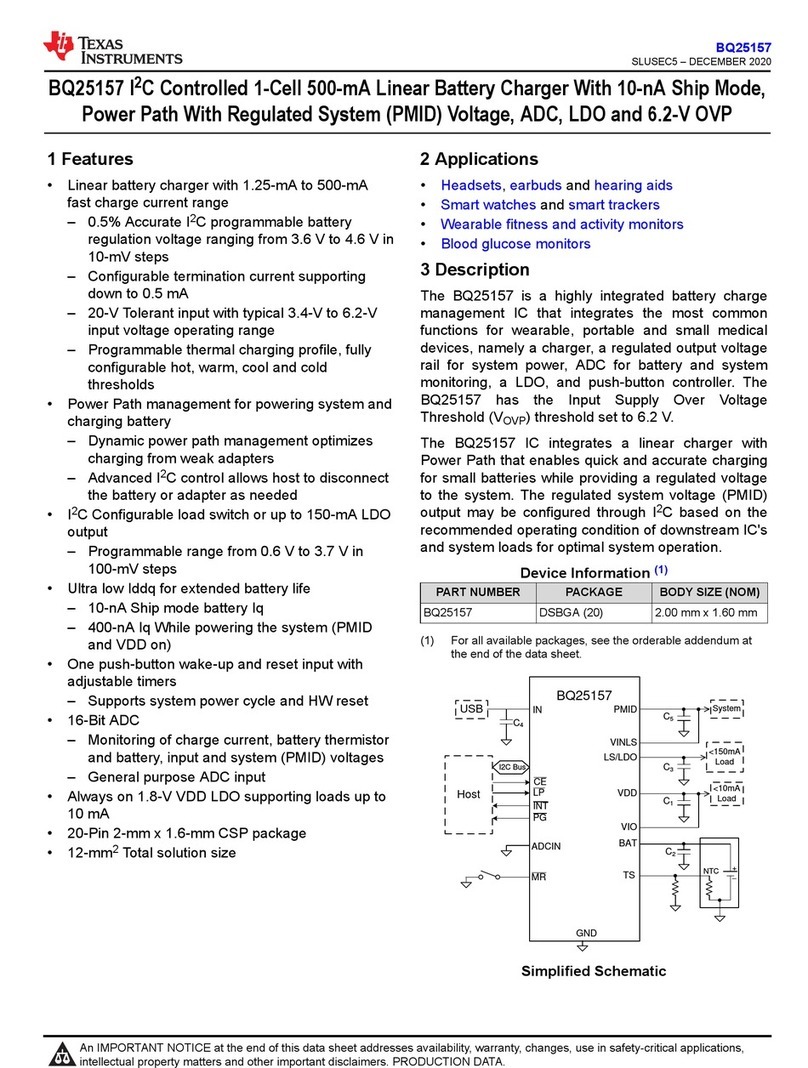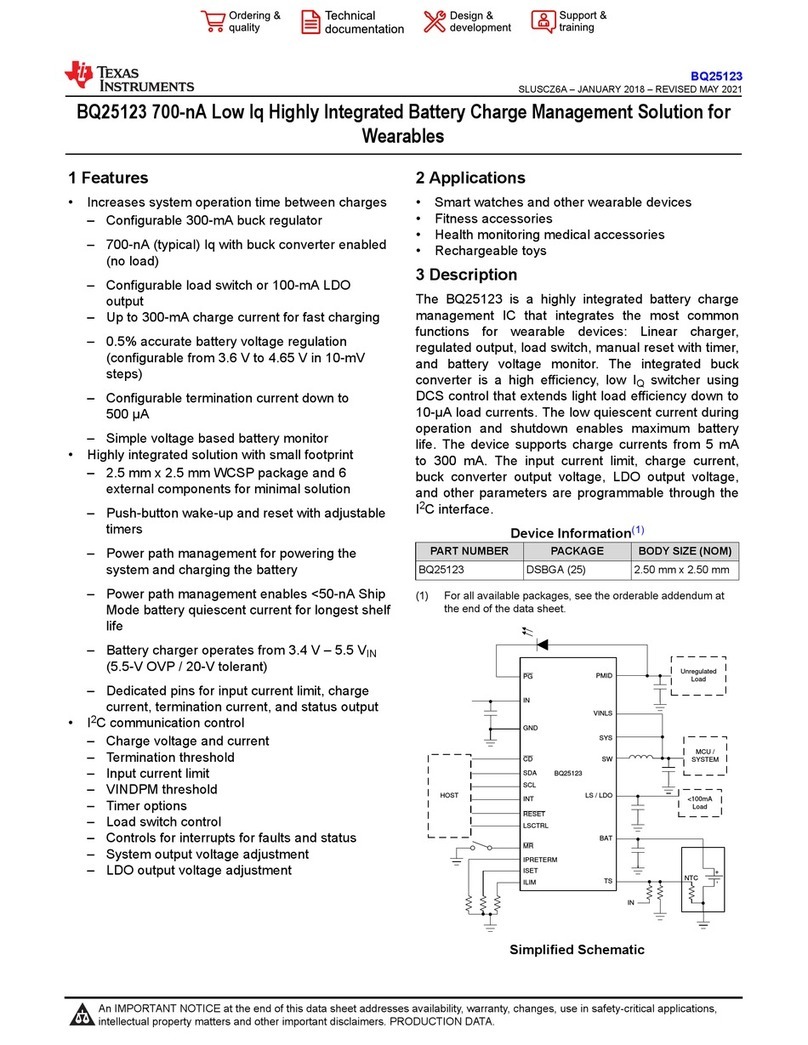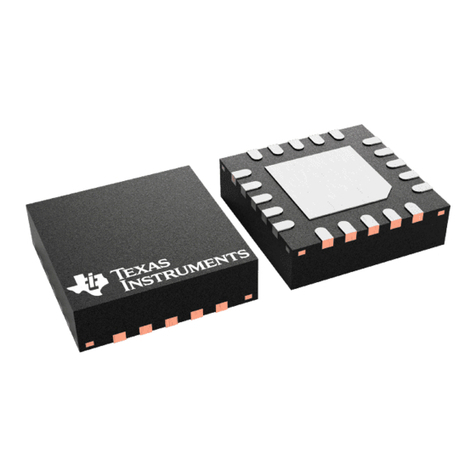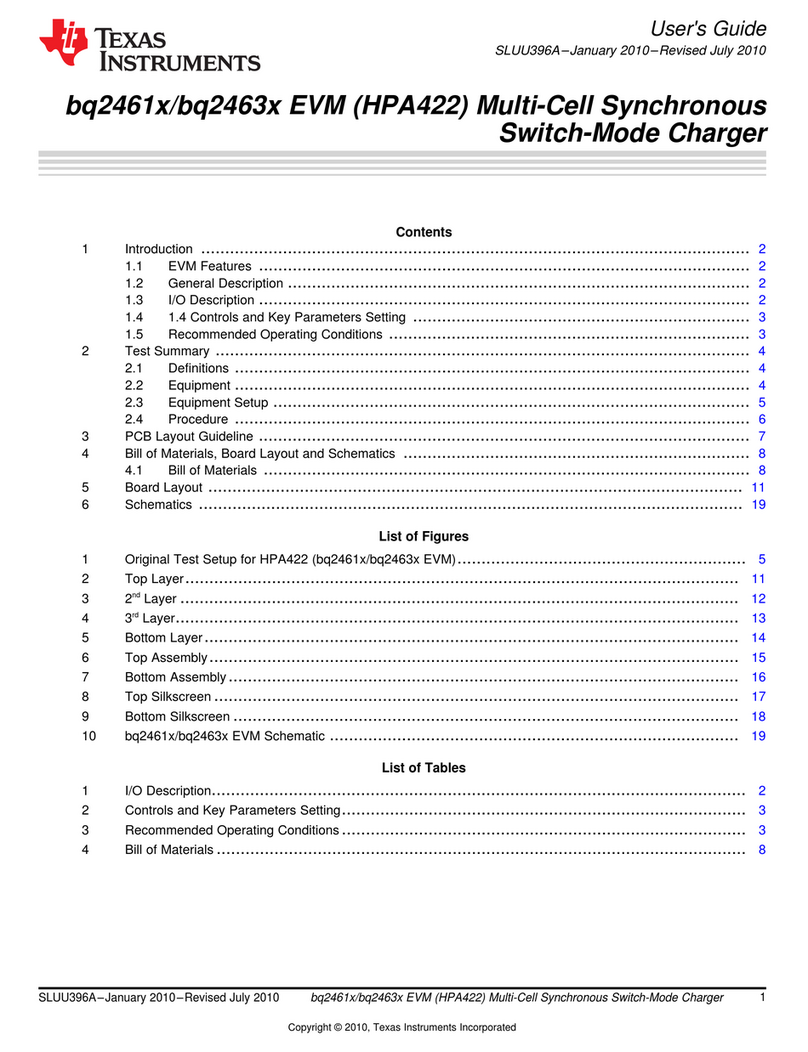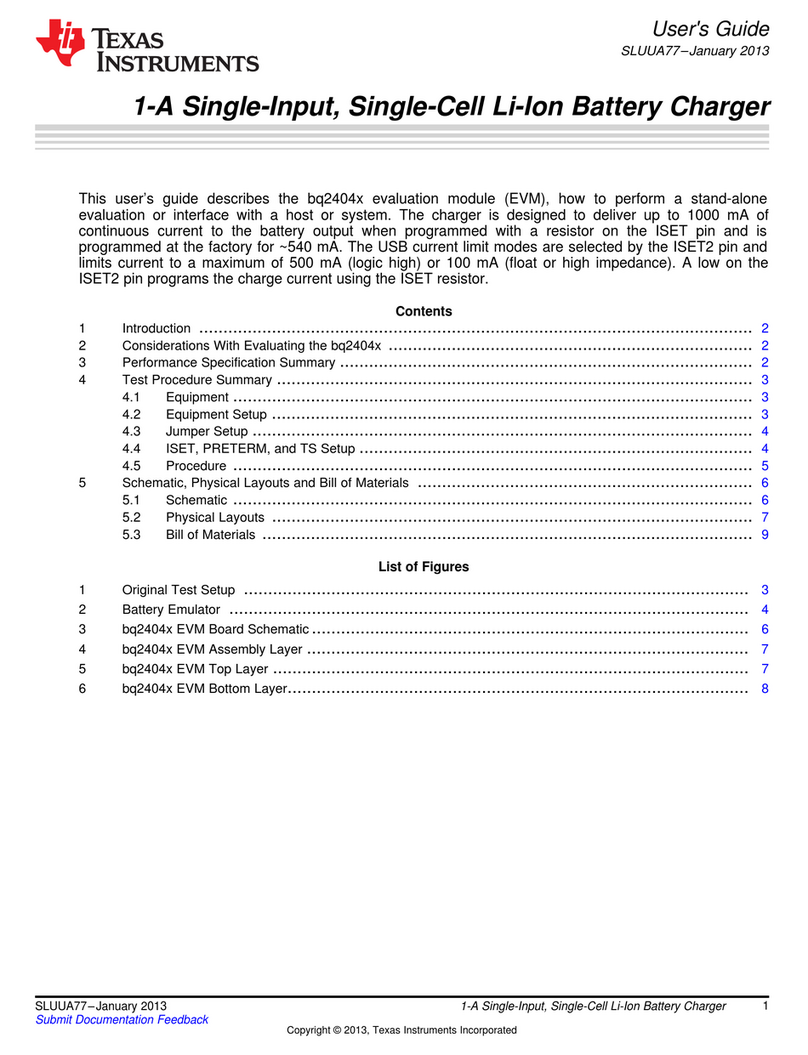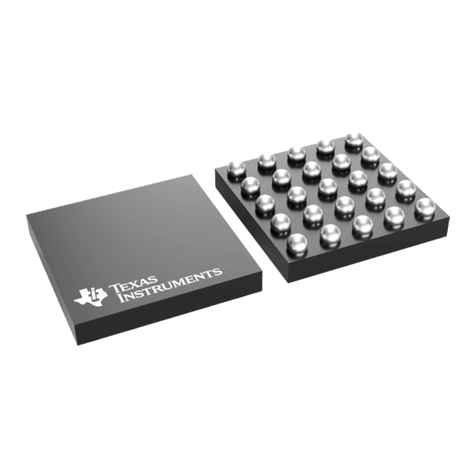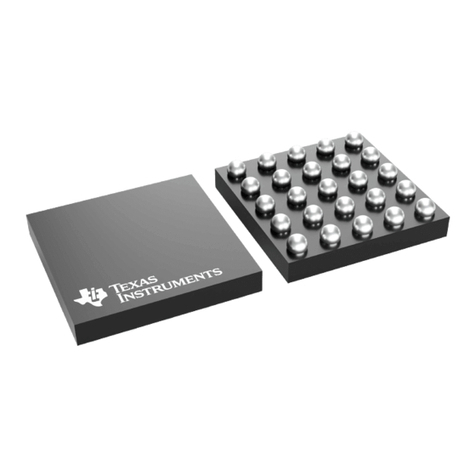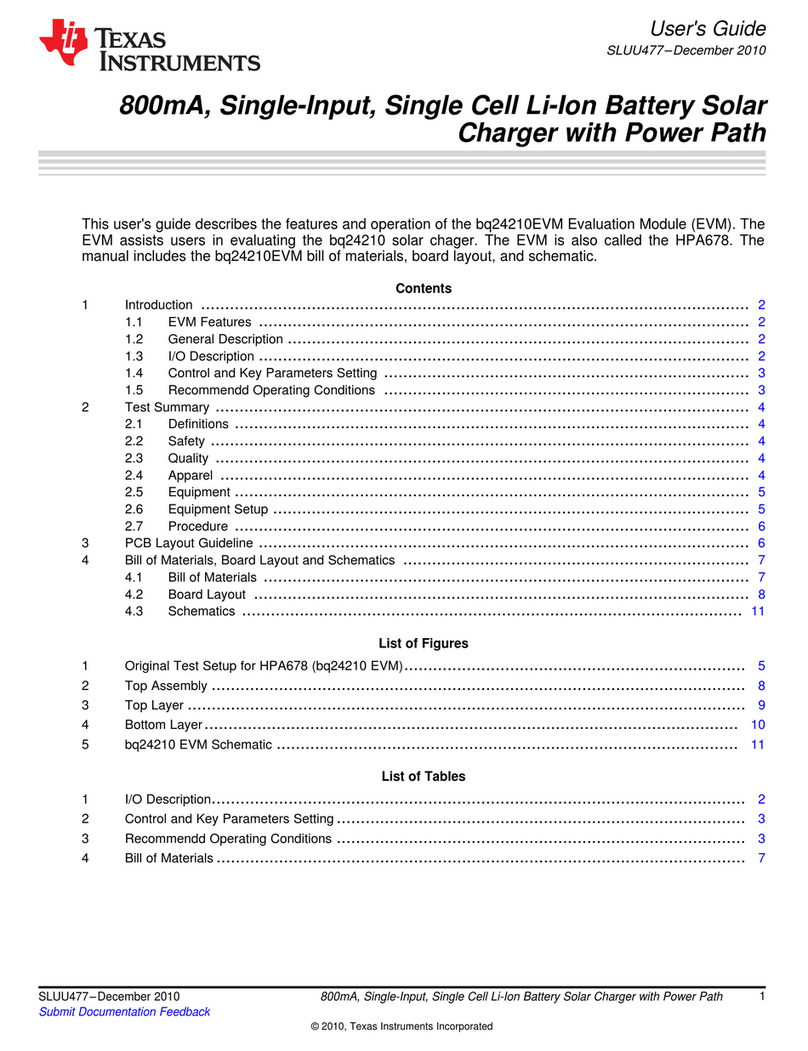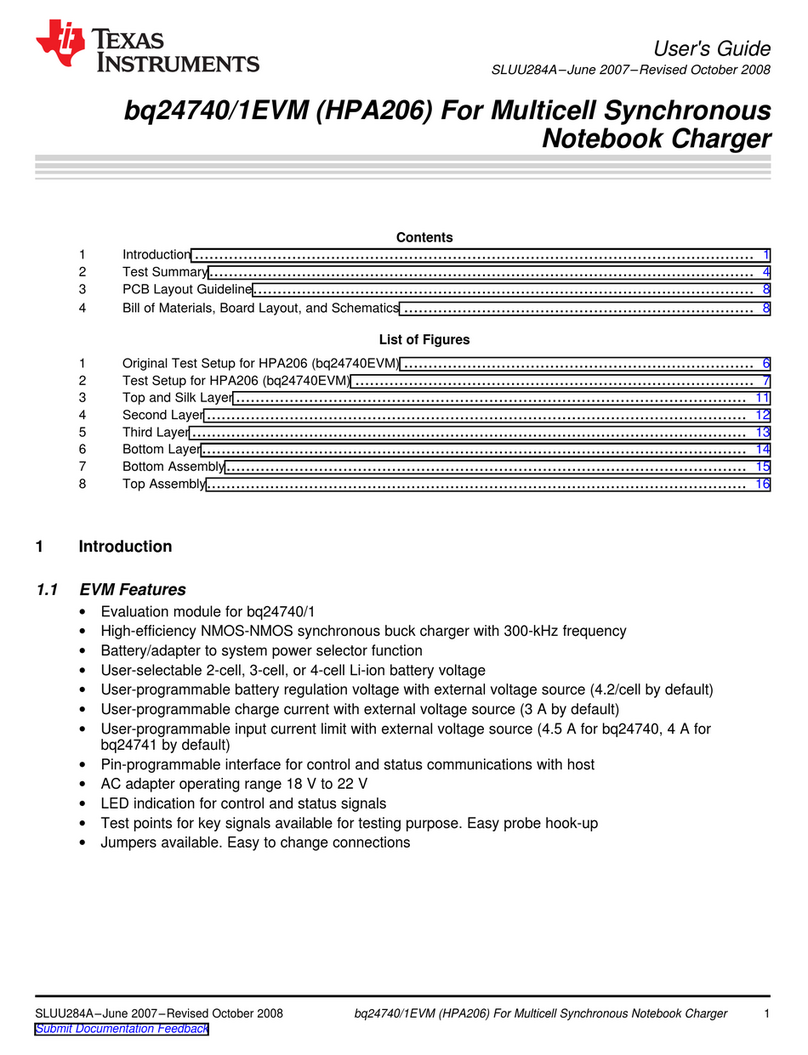
User's Guide
SLUUA08A–March 2013–Revised April 2013
bq2425xEVM-150, Single-Cell Li-Ion Switch-Mode Charger
This user's guide describes the characteristics, operation, and use of the bq24250EVM-150,
bq24251EVM-150, and bq24257EVM-150 evaluation modules (EVM). These EVMs enable test and
evaluation TI's bq24250, bq24251, and bq24257 devices. The bq2425x series are highly integrated,
single-cell, Li-Ion battery chargers targeted for space-limited, portable applications with high-capacity
batteries. This user's guide includes EVM specifications, the schematic diagram, test procedures, test
results, a bill of materials, and board layout.
Contents
1 Introduction .................................................................................................................. 2
2 EVM Considerations ........................................................................................................ 3
3 Recommended Operating Condition ..................................................................................... 3
4 Equipment and EVM Setup ................................................................................................ 4
4.1 Schematic ........................................................................................................... 4
4.2 I/O Description ...................................................................................................... 5
4.3 Test Points .......................................................................................................... 5
4.4 Pin Descriptions .................................................................................................... 6
4.5 Control and Key Parameters Setting ............................................................................ 6
5 Test Procedure .............................................................................................................. 7
5.1 Definition ............................................................................................................ 7
5.2 Recommended Test Equipment ................................................................................. 7
5.3 Software ............................................................................................................. 7
5.4 Recommended Test Equipment Set Up ........................................................................ 8
5.5 Recommended Test Procedure ................................................................................ 10
6 Test Results ................................................................................................................ 12
6.1 Output Regulation Ripple ........................................................................................ 12
6.2 Efficiency Data .................................................................................................... 12
6.3 Thermal Performance ............................................................................................ 13
7 Layout and Bill of Materials .............................................................................................. 13
7.1 Printed-Circuit Board Layout Guideline ........................................................................ 13
7.2 Layout .............................................................................................................. 14
7.3 Bill of Materials (BOM) ........................................................................................... 20
List of Figures
1 bq2425xEVM-150 Schematic ............................................................................................. 4
2 Original Test Setup ......................................................................................................... 8
3 Battery Emulator ........................................................................................................... 9
4 Connector Kit................................................................................................................ 9
5 Main Window of the bq2425xSW Evaluation Software............................................................... 10
6 Output Regulation Ripple at ICHG = 1000 mA ....................................................................... 12
7 Output Regulation Ripple at ICHG = 120 mA ......................................................................... 12
8 Efficiency Versus Output Current While in Battery Voltage Regulation (4.2V)”................................... 12
9 Thermal Image............................................................................................................. 13
10 bq2425xEVM-150 Top Assembly ....................................................................................... 14
11 bq2425xEVM-150 Top Silkscreen ...................................................................................... 15
I2C is a trademark of NXP.
1
SLUUA08A–March 2013–Revised April 2013 bq2425xEVM-150, Single-Cell Li-Ion Switch-Mode Charger
Submit Documentation Feedback Copyright © 2013, Texas Instruments Incorporated
